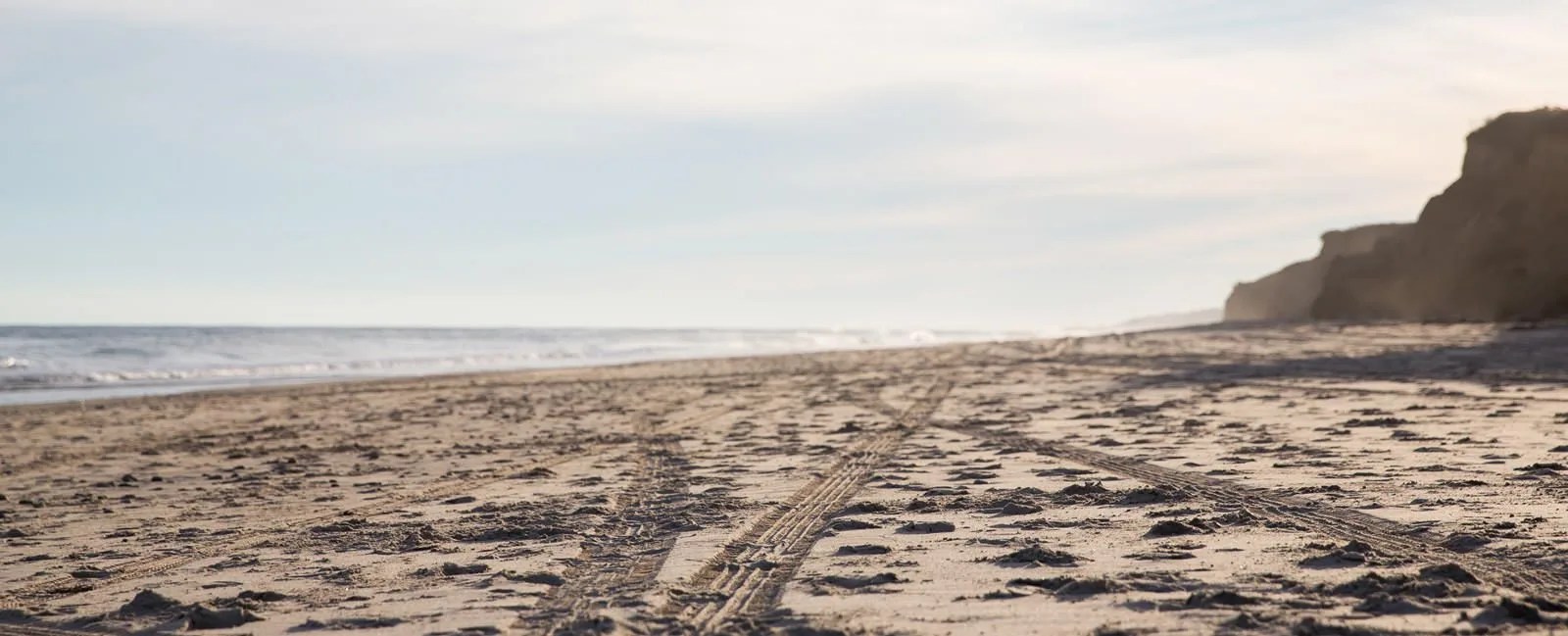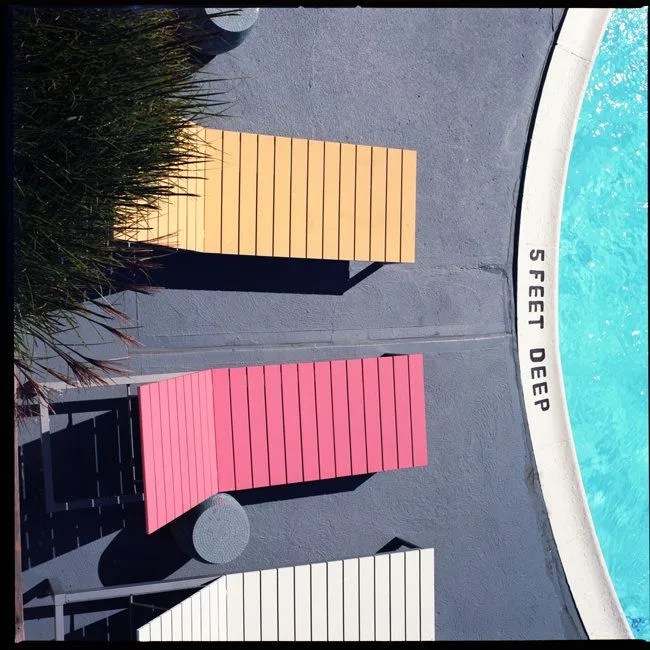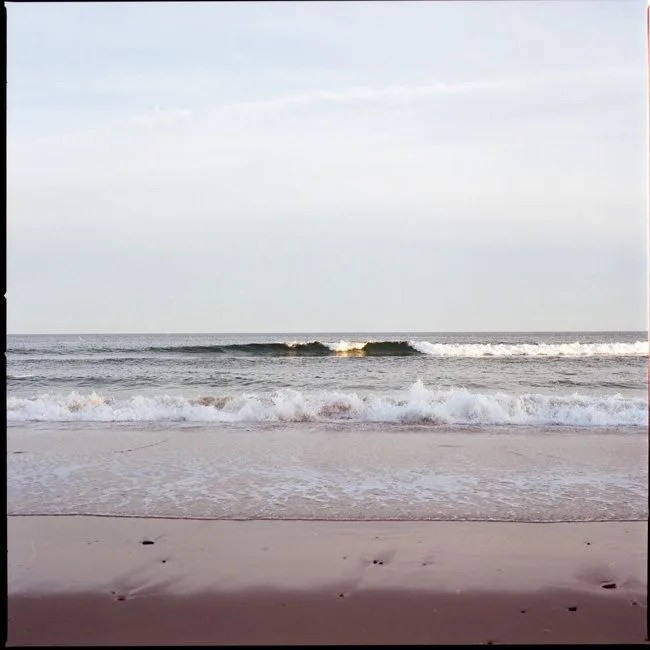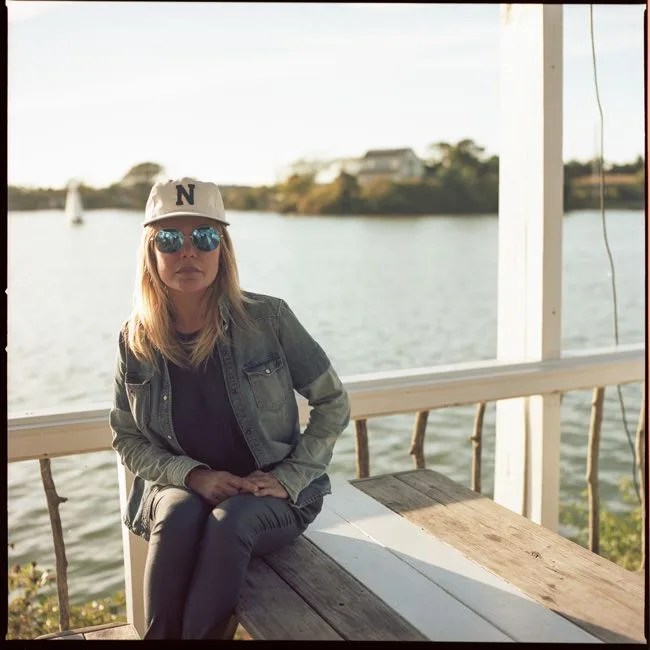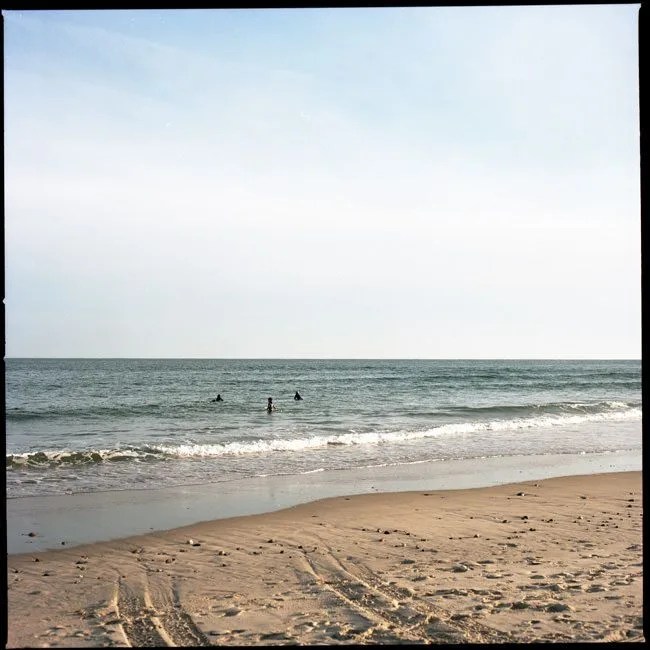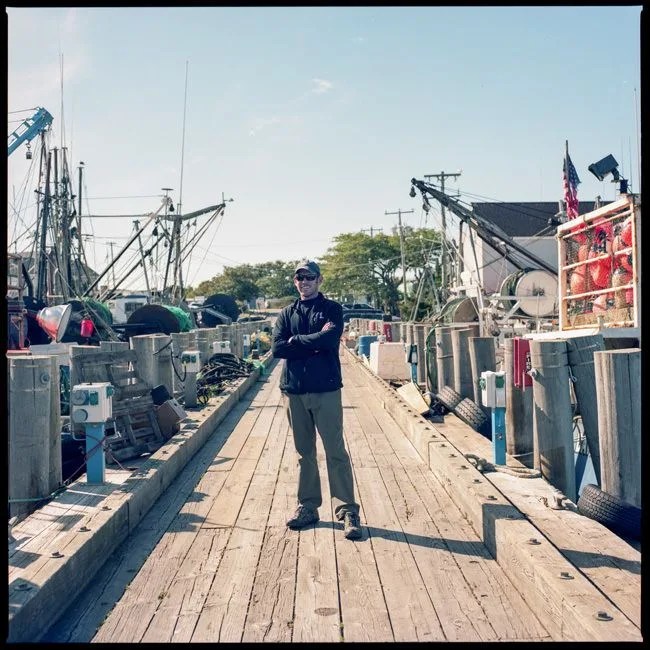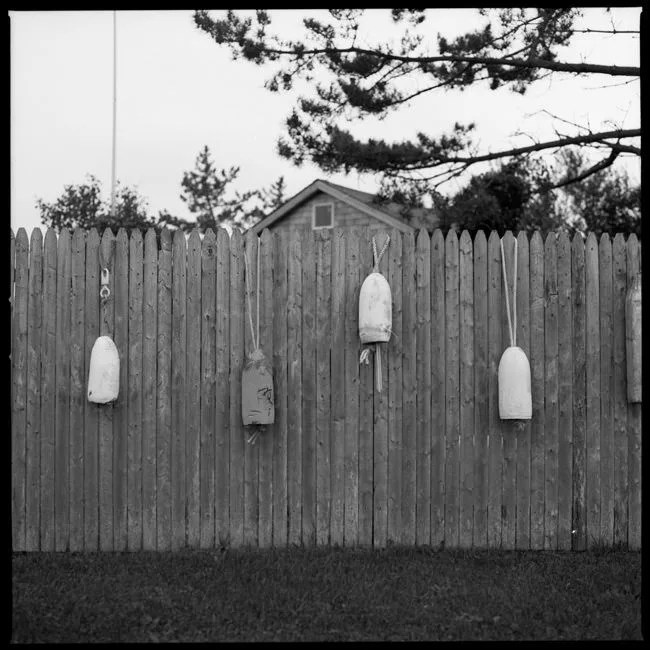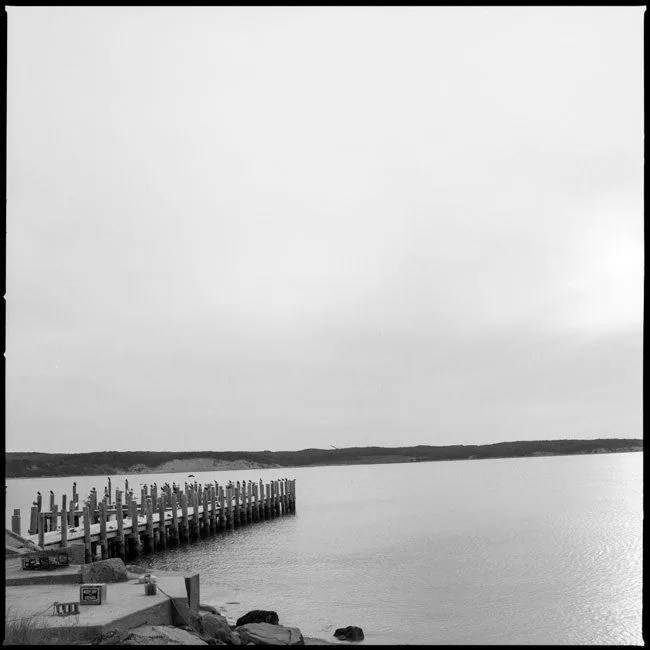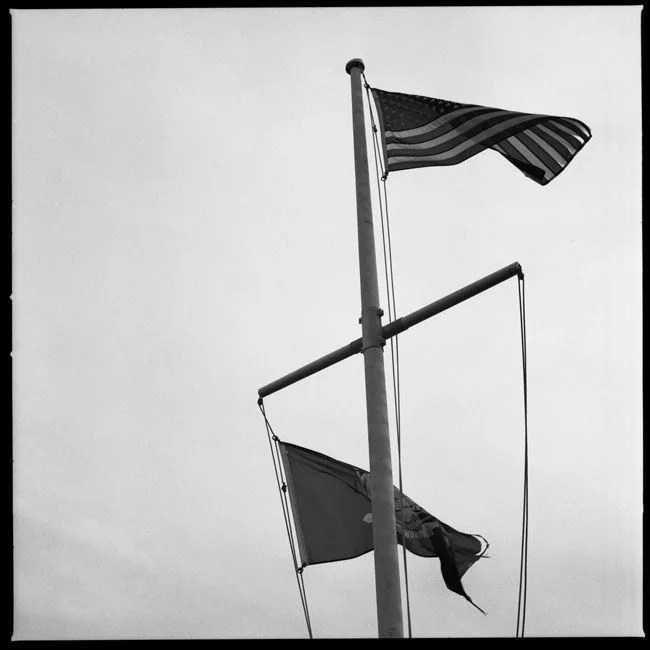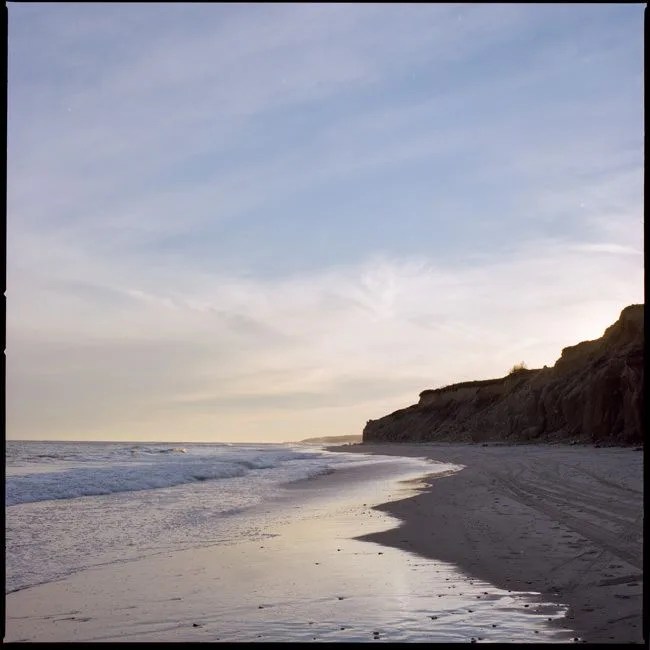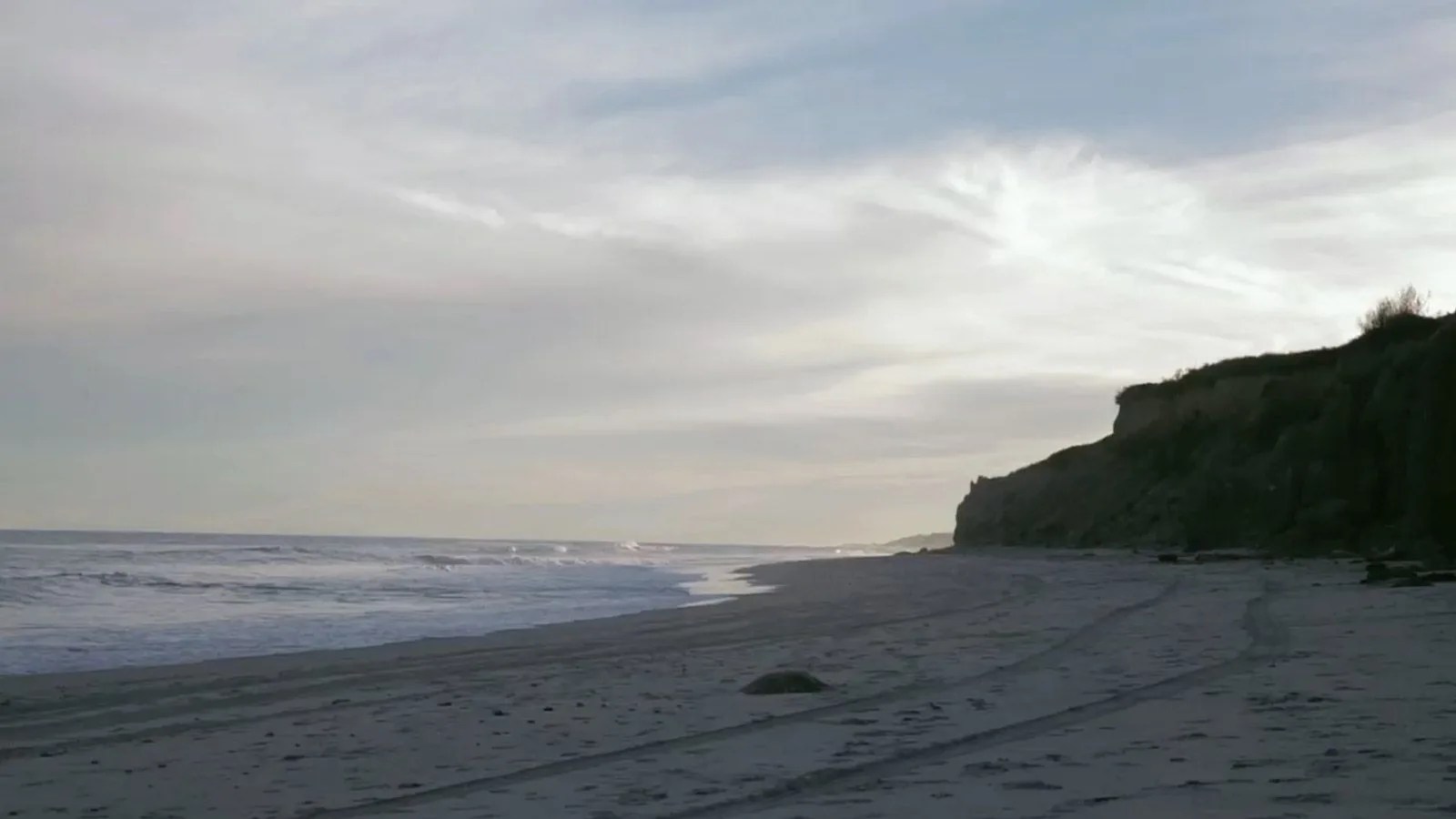
In the hot summers of the 1920s, decades before air conditioners lined the avenues, New Yorkers sat sweating in their concrete city. Downtown, they’d move onto balconies and fire escapes. Uptown, they’d migrate to Central Park, covering the shaded grass with blankets, sheets and themselves. But for the wealthy living on the Upper East or Upper West Side, escape meant packing bags and kids into Model T’s and crossing the Williamsburg Bridge, heading east.
They’d continue east onto Highway 27, where Merrick Road entered Nassau County, passing families headed back to the city from Rockaway Beach to the south. They’d cruise for hours across an open road, joined by vacationers from upper-class Connecticut suburbs and the island’s North Shore. Eventually the highway would cut down to a two-lane crawl, and they’d exit in Southampton, Bridgehampton, Sag Harbor or the village of East Hampton. These were, and still are, areas of affluence known as “The Hamptons”.
Geographically speaking, the town of East Hampton keeps going. It extends beyond where the road chokes down and slices through Napeague State Park and Hither Hills State Park. It continues all the way to the easternmost tip of Long Island: Montauk, home to a small community of mostly fishermen and, after the Second World War, military contractors that came out to build Fort Pond Bay and Camp Hero and stuck around.
Besides a brief effort by Carl G. Fisher in 1926 to develop Montauk into the “Miami Beach of the north”, which was cut short by the Great Depression, the town has remained relatively untouched. Montauk is insulated; the concrete artery of Highway 27 is constricted by the protected land leading into Montauk, stifling the influx of money and tourism from the west. The land looks like a hand, beach and forest and docks clenched into a fist around Lake Montauk in its center.
Fisher’s six-story office building, the tallest in town, remains as his lasting legacy. Dwarfing its surroundings, the building peers down over never-realized plans for designer stores and luxury condos. Instead, it’s surrounded by a sleepy, working-class town of 3,000. Around the building, less than a dozen roads intersect in a grid of sandwich shops, pizza parlors, bait-and-tackles and five-and-dimes. At its center, a circle of grass ringed by concrete and anchored by a flag forms a landmark roundabout, connecting the mismatched roads following the shorelines as Montauk stretches off at odd angles. While Ralph Lauren and Kate Spade invade the Hamptons, casual, family-owned stores have stood strong and proud here. At least, until recently.
In the last decade of summers, more and more tourists have pushed farther down Long Island until, invariably, they’ve arrived at its end. A combination of a growing party scene created by a bar/restaurant called the Surf Lodge, increases in home purchases on Long Island post-9/11, and Montauk’s historically renowned surfing has caused the family town to swell tenfold during the summer months. With increased tourism comes money, but for many it also brings a yearly headache of inebriated vacationers, rising rent prices, congested beaches and changing culture in between harsh, wasteland-like winters.
To find out why and how Montauk has changed, one needs to talk with the locals, who are both the victims and profiteers of one of the fastest-changing towns on Long Island. Below are seven vignettes from six interviews — with a policeman, a teacher, a surfer, a scenester, a fisherman and a retiree — completed as the town was winding down from tourist season and preparing for the winter.

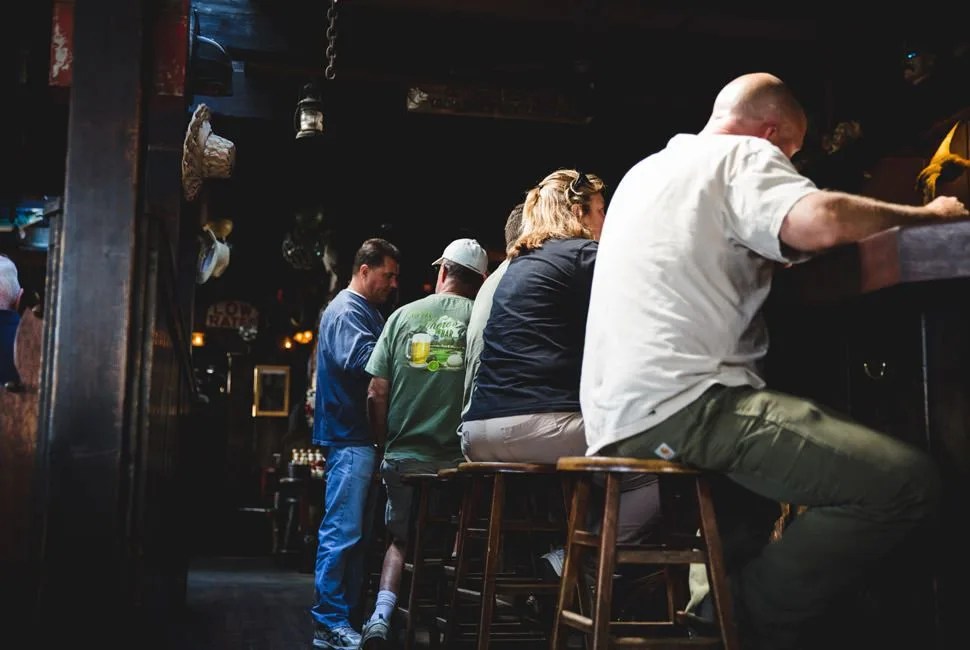
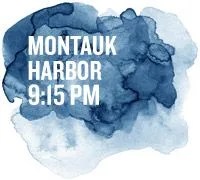
Montauk is the self-proclaimed “sport fishing capital of the world”. When the wind’s from the west, the fish bite and everyone’s out fishing, but when the wind blows in from the east, fishing conditions turn terrible and fishermen stay on land. Many of them end up in The Dock Restaurant, a squat fishermen’s bar wrapped in teal panelling and punctuated with worn-out bobbers and buoys. My photographer and I sat in the dining area of The Dock Restaurant, which is separated from the bar area by a chest-high wall, and the flag outside was blowing in an eastern wind.
We both raised our glasses to Nil Erbil, Creative Director of The Surf Lodge, who sat a few tables over still wearing her rose-colored John Lennon sunglasses, even inside. She had recommended the spot, which surprised us, and then had even come herself. The restaurant is owned by George Watson, who wants to attract waders and hooded sweatshirts over fedoras and colored sunglasses. His website still states: “If you are self-absorbed yuppie scum with a cellphone and ‘free-spirited’ children, go elsewhere.”
A man in an old t-shirt and a hat at the bar said, “As soon as you can quote things in your life from 20 years ago, you are fucking old!”
“Yea, but Top Gun’s a classic”, someone else responded.
“I’ve never seen it.”
“What! I’m not gonna do it now, but later I’m gonna punch you in the face for that!”
Suddenly a megaphone clicked on and a throat cleared. It was Watson.
“Can you keep it down, we have people eating here.”
The men at the bar momentarily fell silent. Everyone in the place looked around at everyone and everything else: a mannequin head topped with a girl scout cap; a man in a ball cap ordering the fish and chips; dim lanterns illuminating dust on a tusk and a sword; above the bar, a stuffed bird and a framed painting of a boxing match; black peeling paint and $2.50 drafts; only one woman sitting at the bar. The noise returned.
The megaphone cleared its throat again.
“You trying to fight? You guys are acting like a bunch of firemen!” shouted Watson’s bull horn.
“No, we’re cops.”
“Cops? That’s worse!”
The cops looked around again. At the sign that said “No whiners, no cell phones, no dirt bags” and at another that said “Get in touch with your inner booze hound.” They settled up and left.

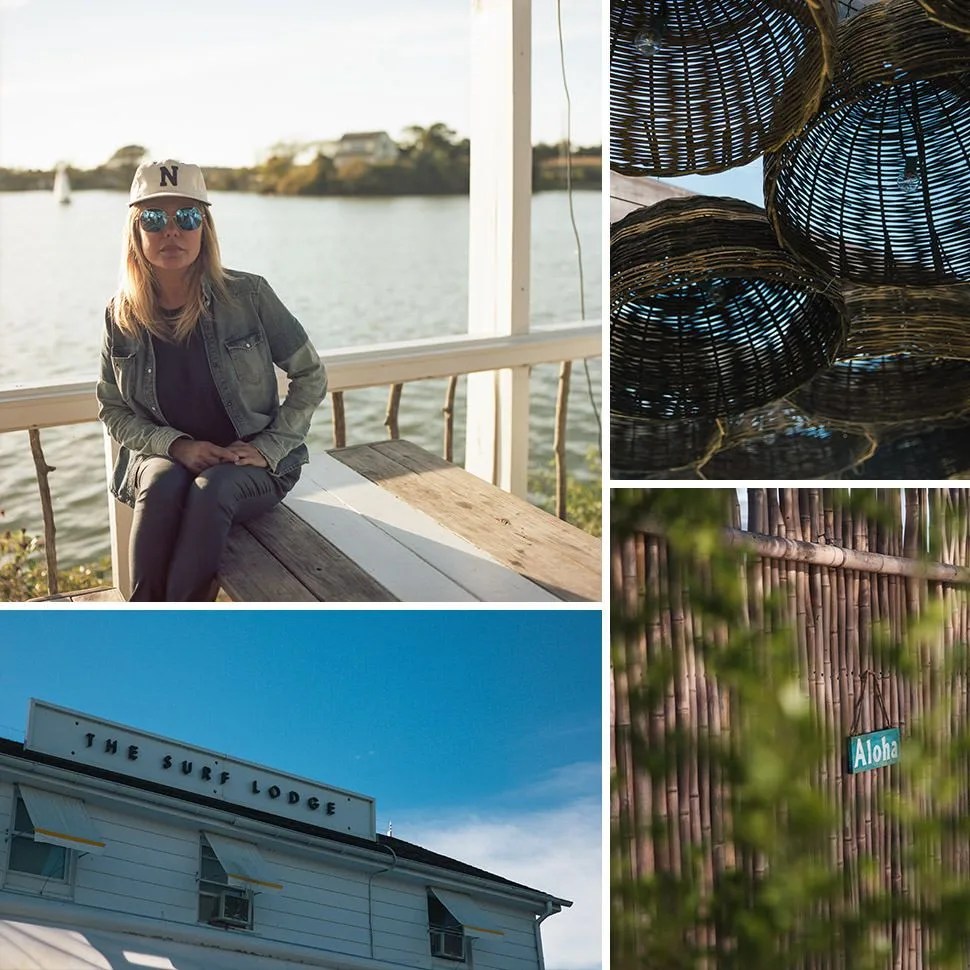

Just hours before we had visited Nil Erbil at The Surf Lodge, which was an inconspicuous hotel called Lakeside Inn before 2008, when it was bought by Manhattan club promoters for a few million dollars. They turned it into a stronghold for the hipster crowd that had moved farther and farther down Long Island, looking for the next cool spot. Erbil, a Turkish designer, joined on in 2008 to manage the bookings, atmosphere and clientele. While beers at The Dock Restaurant cost $2.50, margaritas at Surf Lodge cost $18 and getting a table on a Friday or Saturday with Erbil will set you back a few hundred dollars.
Erbil sat on the back porch, posing in front of a sunset reflected off of Fort Pond. “This is great”, she said, pointing up to giant baskets overhead. “This is our signature, by the way, those baskets have a history. It’s from Haiti. You cannot find them in America.”
The wooden, weaved baskets, maybe 50 in all, lined the roof over the porch, each housing a light bulb and hovering above modern seating and tattooed photographers as they ran around the area. The day’s best light was fading fast, and they were wrapping up their shoot as we chatted.
“There’s a story”, said Erbil. “We have to send a woman twice just to replace them. You have to go to the local market.”
The place was closed to guests but remained open for shoots while they winterized the property. Off to our right, Keds was using the lodge as a backdrop for a commercial shoot.
“We’ve had the photoshoot for two days”, Nil explained. “This month, basically for us, is dedicated to mostly photo shoots and weddings and rehearsal dinners… We have an interesting mix-and-match who appreciate an organic kind of chic.”
Before Erbil and The Surf Lodge was Jim Barnes and Lakeside Inn. “[Barnes] is totally local, and it was run by his son”, said Erbil. “They didn’t have accommodations, they were just a bar. They had maybe food, snacks, but the rooms — they were used for camping, for kids and were very trashed out.”
Despite the renovation and reimagining by investors from “nightclub backgrounds”, Erbil rebukes being stereotyped, and even the word “party”. This sensitivity stems from the backlash when the lodge arrived: eggs were thrown at the establishment and a general iciness pervaded from the neighborhood. According to Erbil, the community woke up in 2008 “living a very quiet lifestyle, and all of a sudden someone comes and blows up in your town.”
“We have great bands and great food and host so many — let’s put it this way. You’re opening your house for events. Yes, absolutely, there is a party, but we don’t program the party.”

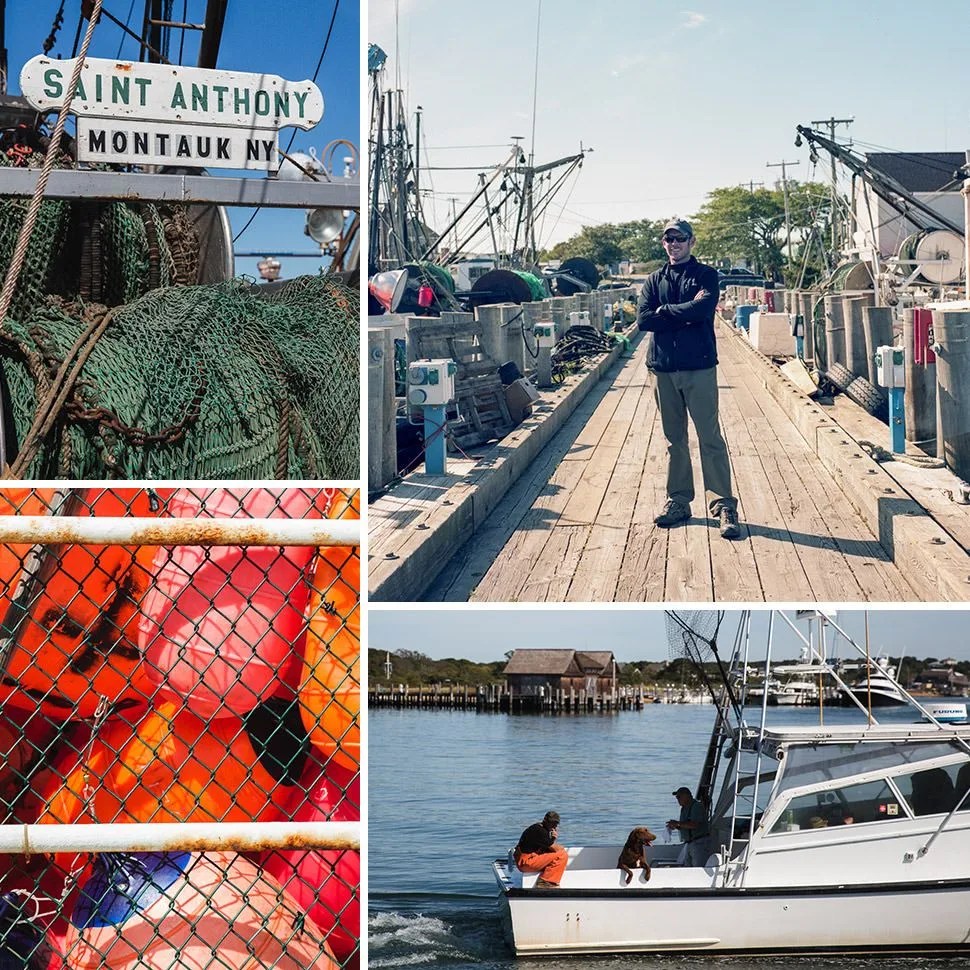
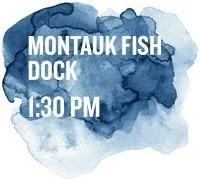
While its nightlife surges, Montauk’s fishing has been slowly dying. The town was founded as a prosperous fishing village, but many of its boats are now chartered by tourists going after sharks and big fin tuna while the eastern shore continues to import almost all of its seafood. Despite this, many of the town’s permanent residents continue to make their living from the sea.
Just south of the mouth of Lake Montauk — which was a lake only until the 1920s, when Fisher and his developers dredged it to connect with Long Island Sound for access to their yachting clubs — is the Montauk Fish Dock. At about midday, my photographer and I met Sean Barrett, a local fisherman, by the dock.
We walked out past boating slips, eight on each side, until the dock ended in a T. Barrett pointed to a father and son as they stepped from the dock onto their boat. They were 15th- and 16th-generation fishermen respectively, a dying breed.
Despite entering the “renaissance of American fisheries” in which increasingly local fish stocks are growing back to levels that the NOAA rates sustainable for the first time in 40 years, Barrett said the harbor is a fraction of what it was 20 or 30 years ago.
“At one time, this country had thriving fishing ports like Montauk that provided food for the nation, but now our country is importing 90 percent of its seafood from abroad. To give you an example, those former landing facilities were turned into waterfront condos and fancy restaurants”, said Barrett as he pointed across the water. “So you see a lot of working waterfronts and coastal, harbor areas being converted into hotels, condominiums and vacation properties. You don’t ever see hotels being turned into landing facilities.”
Barrett is a founder of Dock to Dish, a sustainable and community-supported fishery that same-day delivers fresh catches to members. He’s not yet 40 years old, but he has organized 42 fishermen in New York, all of whom profit from Barrett’s ability to cut out the middleman by delivering fish directly to their customers. For those scratching by in the industry, it’s a much-needed financial gain.
While we met Barrett in Montauk, it’s not where he lives. He and his fishermen have been priced out of living in Montauk proper and now have homes in Springs, a little enclave to the northwest inhabited by many local fishermen and shellfishers. While rising prices and the migration of money to the East End of Long Island has been occurring for the past few decades, Barrett traces a catalyst of the change to the September 11, 2001 attacks.
“In the ‘80s and ‘90s, from West Hampton to Hampton Bays to Quogue — all those towns west of here — the big drive of momentum and popularity, what made those towns click, was summer shares, shared houses. Everyone would get quarter shares and half shares”, Barrett said. “But after 9/11, [enrollment at] the East Hampton middle school and grammar school on Bridgehampton quadrupled. All the people who had second homes out here, who lived in New York City, moved out here permanently with their kids.”
[The government] then started enforcing old tenement laws”, Barrett continued. “They didn’t want any more of the shared house and summer madness. So starting in West Hampton to Hampton Bays to South Hampton, Quogue, Wainscott, the zoning board started doing away with time shares. Except in Montauk.”
We stood on the end of the dock, boats cutting around our backs as Barrett pointed west.
“Inevitably you had this migration pattern shift to where now there’s this tremendous concentration of transients, which is great in one regard for the local businesses… but I think it’s very challenging and hard for the local residents who have to deal with it”, Barrett said. “It becomes vacation land for three or four months. When the ‘August people’ arrive, it takes on a completely different identity and personality.”
Montauk On Film
10 photos
Montauk has a surprisingly low-fi feel for a town less than 120 miles from the screaming lights of Times Square. It’s a vibe we cherished while we were there and missed dearly when we left. Some of the best images we captured from our trip — and many that convey that amazing atmosphere the best — were taken on Kodak film, an aging (some say archaic) thing that’s seeing a much-appreciated revival in the hands of new users searching for authenticity and an escape from digital life. Sound familiar? – Henry Phillips

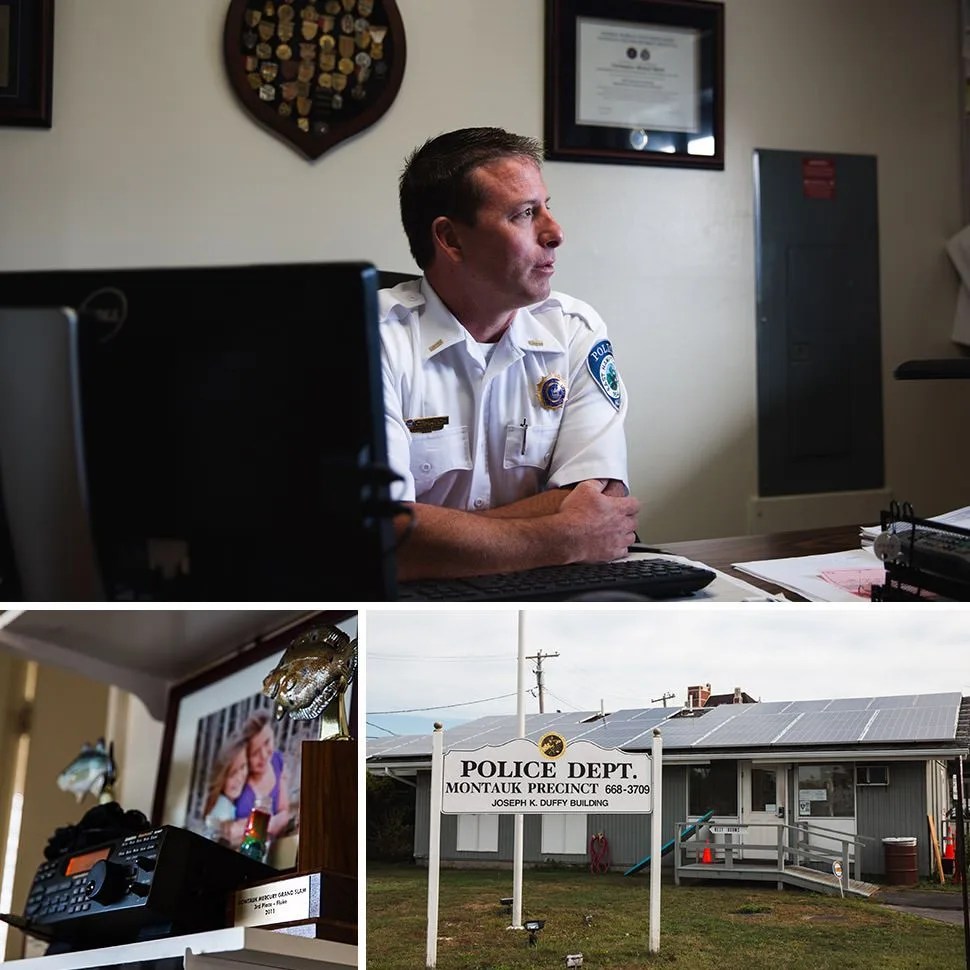
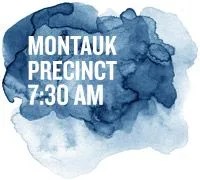
Lieutenant Christopher Hatch is Commander of the Montauk Precinct, a small gray building topped with solar panels that overlooks the center of town. He’s coming up on 22 years working for the town. When we met him, he was preparing to switch gears, from reactively policing the nightlife and managing the drinking and driving, bar scuffles and “sheer congestion” of the “August people”, to proactively securing empty houses for the winter, and stopping petty theft and burglary, along with the quiet undercurrent of drugs you’ll find in most commercial fishing communities.
But a large part of his job — a job tasked to anyone securing a tight-knit community — is listening to the complaints about change.
“I would say maybe seven, eight years ago when the real estate market and money kind of crunched, some of the outside money came in”, said Hatch. “It purchased into the business markets. The nightclubs, the bars, the stores, and unfortunately, a lot of the local families in some way, shape or form have been generationally priced out.”
If not at the precinct, Hatch is likely at local meetings for businesspeople and residents like the Concerned Citizens of Montauk or the Montauk CAC, which is a citizens advisory committee to the town board. On the one hand are the “house watchers, contractors, landscapers, garbage and rubbish removal people, and those that own some of the main stores and real estate”. And on the other side are “people that call themselves locals that have been maybe here for 10 or 15 or 20 years. They came here to get away from the clutter of the city, when they could get in here price-wise, and are outraged by a lot of what goes on.” For locals without businesses, all the summer months mean are traffic and a lot of people.
Hatch says one of the major factors keeping commercialization to the west is how seasonal Montauk remains. Customers just won’t venture as far east as Montauk outside of the summer months. But that could soon change.
“We’ve always had a tourism influx. It usually runs the season around Memorial Day through Labor Day”, said Hatch. “Areas like West Hampton, Hampton Bays, South Hampton, they used to get the night life and club life that is here now. Maybe it became too densely populated in the summer, so people started looking a little further east. And they’ve reached here now, and they’ve seen what the place is like. You can’t beat the beaches. They are wide open to anybody that wants to go as long as they can find a parking spot.”

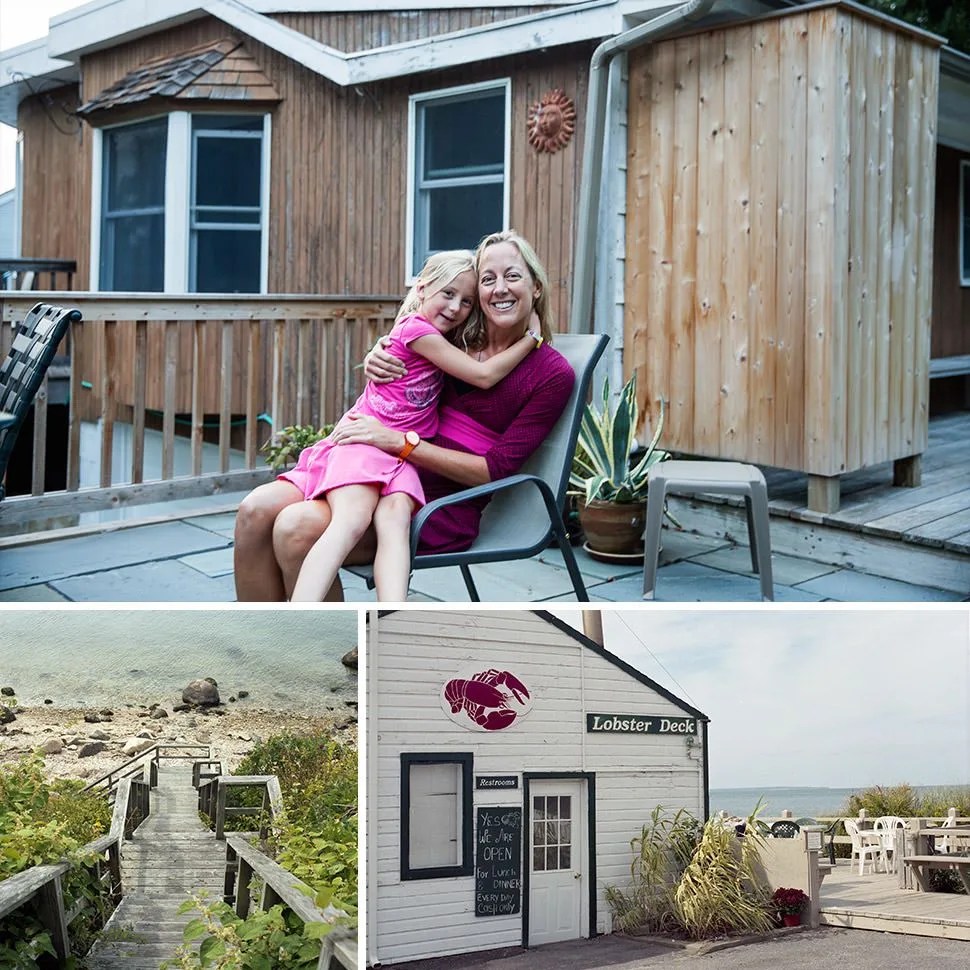

None of the summer visitors see winter. Montauk is a thin peninsula jutting into the cross-winds of the Atlantic, and its harsh winters drive tourists away and locals inside. Rather than risk driving iced-over roads, year-rounders get their food and groceries delivered to their doors.
As Sean Barrett had explained it, “Some people will tell you it’s like the post-apocalyptic wasteland, not even tumbleweeds or crickets. It’s just a whitewashed silent. It’s so close to these sea winter ocean breezes that there’s a salty, metallic kind of ice-cold locked in, so it can be desolate, but it’s beautiful at the same time.”
For those who worked all summer, taking advantage of the crowd, the winter is their only vacation. If they can, many go to Puerto Rico, Florida, or anywhere southern and warm. But for Angelika Cruz, winter is the busy season.
Cruz teaches Spanish to all grade levels at the Montauk Public School. For the last six years, while August rages on, she’s off in Greece visiting family, avoiding the crowds and renting out her home. She returns in September to her neighbors ramping down from the season.
“August is the worst, so when I come back, I see on my neighbor’s faces”, said Cruz. “You can see it. They’re done.”
In summer, because of the congestion in the IGA grocery store parking lot, many locals get their groceries delivered by Peapod. In the winter, Cruz and others do the same, buying toiletries off of Amazon because the roads become so miserable. She sits with her daughter by her wood-burning fireplace and waits for food to come to her.
Cruz’s school faces the unique challenge of a student population who needs a vacation and didn’t take one during summer. Families worked all summer in retail shops and property management and are now looking to leave during the winter freezes of February. Cruz says 30 to 40 percent of her students are absent for certain weeks during February.
“The state has become much more demanding, and parents have realized that their kids — unless they get a private tutor to really keep up — fall behind”, said Cruz. “The students go to see their family [sometimes in other countries]. They go back. That’s like a three-week chunk to go back, and that’s the only time they aren’t working.”
Cruz was drawn to Montauk not for the teaching, but for the same reason as a lot of transplants: surfing.
“I surf, and I have surfed for a long time, and it seems in every place I’ve traveled in the world, the surf culture finds a cool spot first, and then the art scene follows, and then the nightclub scene follows, and it becomes more popular. But it usually starts as a little, desolate place that nobody’s heard of, like a little fishing village”, said Cruz. “I lived in South America for six years, and I saw the same thing happen in the hot surf fuss there. At first, there was nobody. There was one little hostel run by an Irishman when I first got there. Six years later there were four or five luxury hotel night clubs.”
Cruz’s daughter, who’s sitting and watching cartoons before she goes to tennis practice, was surfing before she was even born.
“I surfed when I was five months pregnant with her, and Corey [Senese] would be amazed. He’d compliment me saying, ‘You ride like the longest waves ever.’”

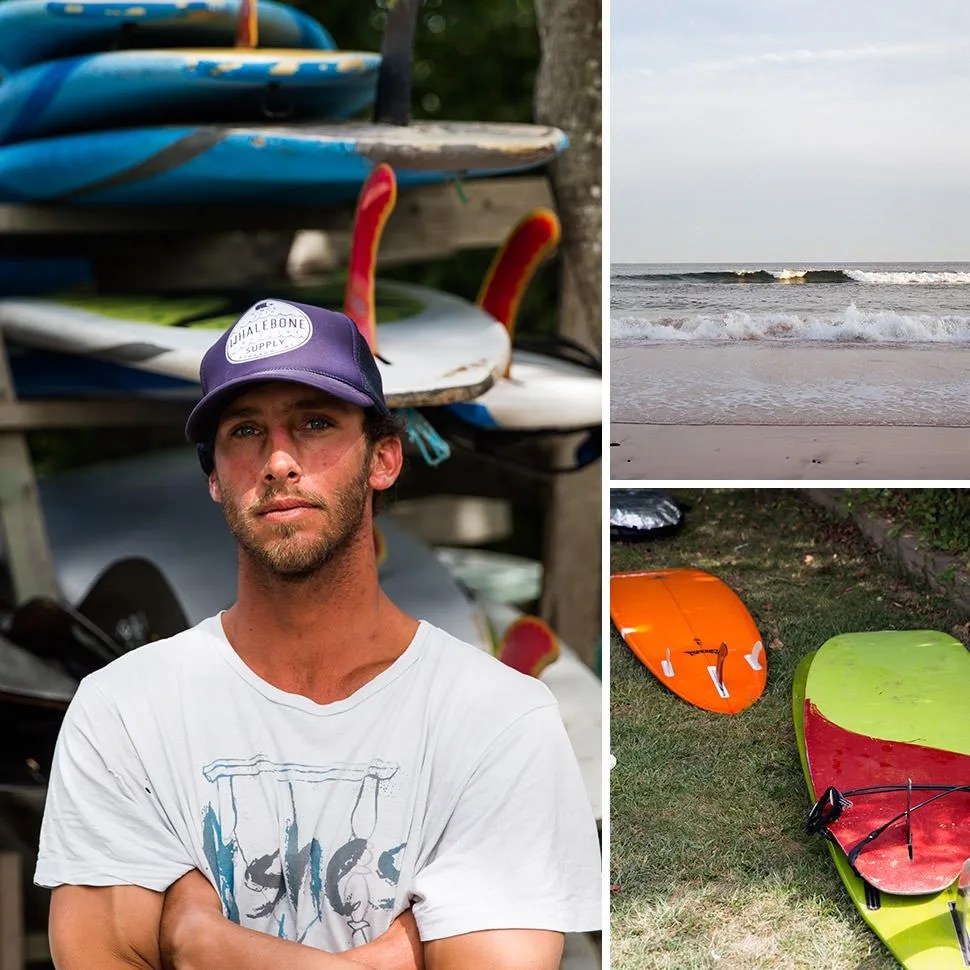
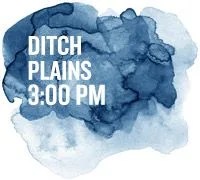
For decades, borrowed wood-paneled station wagons and ‘80s Land Cruisers lined the dirt parking lots nestled against Montauk’s beaches, wide open, unregulated stretches of sand that sat between the Atlantic and high cliffs, dunes dotted with cement barracks and paths cutting through vines, sassafras, bearberry and bluestem. Now the dirt lots are dotted more and more with the current year’s Land Rovers, topped with surf boards coming in on news of incoming swells, part of the gradual trickle of transients encroaching on local surf spots.
Corey Senese is a 33-year-old surf instructor originally from San Diego. His hair, lips, and both sides of his hands are all the same color, that of sun-bleached sand.
We sat on the porch of his grandmother’s house, which overlooks the closest paved road to one of the best surfing spots in Montauk: Ditch Plains Beach. It’s a narrow tract of land less than a mile wide separating the south shore of Lake Montauk and the Atlantic. The beach is known for its long and rolling waves. In many east coast beaches, sandbars act as breakers, turning the waves into plunging things, thick and steep and dangerous. Montauk is the last bit of land before the Atlantic waters turn deep, making for the type of “mushy” waves that are great for learning to surf. That appealed to Senese.
Like Erbil and The Surf Lodge, Senese arrived to mild protests, resistance to inevitable change happening faster than expected, to another visitor trying to make money off of the community’s resources. “I think there was one guy that started a petition like five years ago”, said Senese. “But he soon found that there were so many people that liked us as people, and they knew what we were doing.” Senese takes care to stay out of the way of locals while teaching.
He arrived a decade ago and has quickly become one of the premiere surf instructors in town. During the busy season Senese never goes out to bars. He’s tired and in bed by 8:30 p.m. Despite this, The Surf Lodge approaches him during the season due to his status in the community.
“We used to all hate the The Surf Lodge, you know, The Surf Lodge was a hipster spot, but now those guys hook the surf instructors up like crazy. We go in there, and they feed me drinks and stuff.”

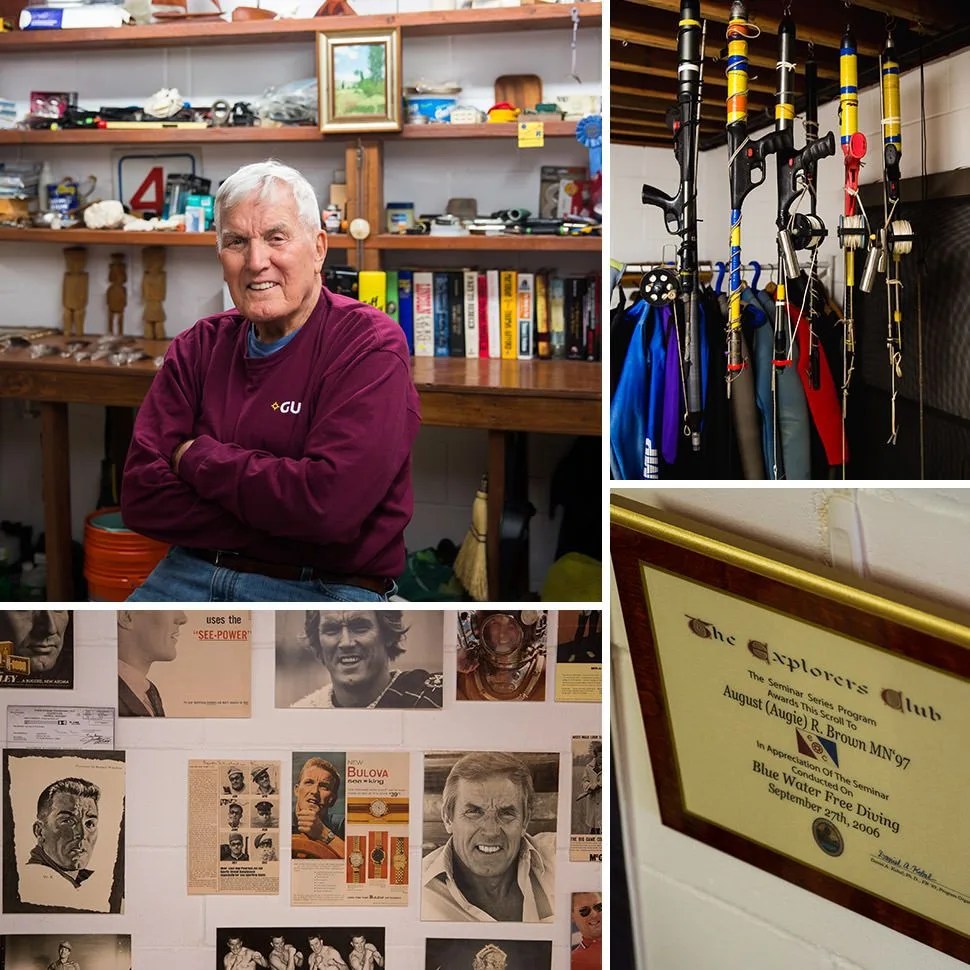

In 1956, Augie Brown was 24 years old. He had just returned from the Korean War and, unsure of what to do, came to New York and enrolled to get an economics degree at Columbia University’s Graduate School. Brown was a free diver, and, in search of diving spots near New York, he packed into a car with the captain of the Yale swimming team and headed east. They wanted to dive and figured they’d drive until they found a spot. They ended up driving through Long Island until the road ended in Montauk.
“We ended up right down here. We thought this was the ocean, but this is the Long Island Sound”, recalled Brown. “The ocean is the south side, and I never forgot it. We built a fire. Nobody was around. And I said, ‘You know, I’m going to come back to this place.’”
After Brown graduated he returned in a Volkswagen camper with his wife, Grace, and their big German shepherd. For five or six years they came down and built fires and camped in an old ammo dump left over from a WWII outpost, defense for the eastern seaboard. This was back when fishermen could haul in as many fish as they wanted, when Montauk was wide open.
In 2014, things are a bit different. Brown, now 82 and retired from his work as a professional male model, has lost a few inches from his 6-foot-4 frame and can no longer dive. His home, overlooking Fort Pond Bay, Tobaccolot Bay, Gardiners Island and the infamous Plum Island — owned by the United States Department of Homeland Security and home to the United States Department of Agriculture’s Plum Island Animal Disease Center — sits on three secluded acres. This is no accident.
Brown came out to Montauk exactly 30 years after Carl G. Fisher bought the East End of Long Island and attempted to repeat his development legacy of Miami in New York. He quickly dredged Lake Montauk to connect it with the Sound and built a yacht club, golf course, luxury resort hotels, tennis courts and a six-story building with his office at the top in order to watch over his creation. Three years later, in the final days of October, the stock market crashed and Fisher’s pet project effectively ceased.
After the financial damage of 1929 and physical damage of a hurricane in 1938, the United States Navy bought up most of the East End of Montauk for a base in WWII. Montauk was quiet during the war years, aside from June of 1942, when four German spies who came ashore with three crates of explosives, detonating devices and funds for a two-year campaign of espionage were apprehended. Two decades later, Brown started buying up land with his modeling paychecks.
“I put my money here when nobody wanted it. It was out too far. There were no throughways out here. You had to go Route 27 the whole way through every town — blah, blah, blah”, Brown said. “From New York it was about a four-and-a-half hour trip. Then they put the throughways in, which the environmentalists stopped 50 years ago [due to the parkland]. So now you’ve got traffic jams 40 miles long in the summer. You can’t believe it. There’s only one road, one lane going that way one land coming this way.”
While the Hamptons catered to the “pretentious Eastside Manhattanites”, Montauk stayed relatively cheap, and Augie and Grace brought up an old laundromat overlooking the water after it was buried in waist-high sand from a hurricane. They emptied the sand and opened a discotheque/restaurant called The Pirate’s Den. It’s now called The Sloppy Tuna, which Brown recently visited. “I don’t even remember what day it was. There had to be 500 people in the place, and they had six security guards. Grace and I had built a top floor. People were packed on the top floor. They were packed like sardines. You couldn’t even move.”
While Augie continued to split his time between Montauk and Fort Lauderdale, he dove with a speargun for striped bass in Montauk for decades. “Everybody knows I was a diver”, said. “That’s how I got to Montauk. That’s why I stayed out to Montauk.”

The locals refer to the day after Labor Day as Tumbleweed Tuesday. It’s the official end of the busy season, when the vacation populations leave as suddenly as they came.
In the last decade, slow change has come to a head. The Surf Lodge, once egged and hated, is accepted and growing every year, providing the model for a profitable party scene at the far end of Long Island. Rumors circulate that designer stores are coming. Old, cheap condos are being gutted, their exteriors remaining untouched while their interiors are dialed forward to 2015. After 85 years as a family business and beloved local spot, Duryea’s Lobster Deck, a prime restaurant for lobster rolls with a view, near where we met Cruz, served their last customer in 2014. A high-end marina will soon replace it. More country clubs are on the way. And more vacationers all the while.
As the economy grows, so does Montauk. It’ll continue to change, to expand, refurnish and repaint for brief and unaware visitors that come one profitable month out of the year. The road out of Montauk takes cars past green trees, sand-covered turnoffs and hills that crest to views of the Sound on one side and the ocean on the other. Then an old windmill, posited right by the road, signals the invisible entrance into “The Hamptons”. The countryside changes to streets lined with luxury SUVs and the fluorescent glow of storefronts. Flips flops click down the sidewalks, shopping bags slapping on thighs. Millionaire beach houses hide on some secluded shoreline off to the south.
The drive back from Montauk might just be a drive into its future.
